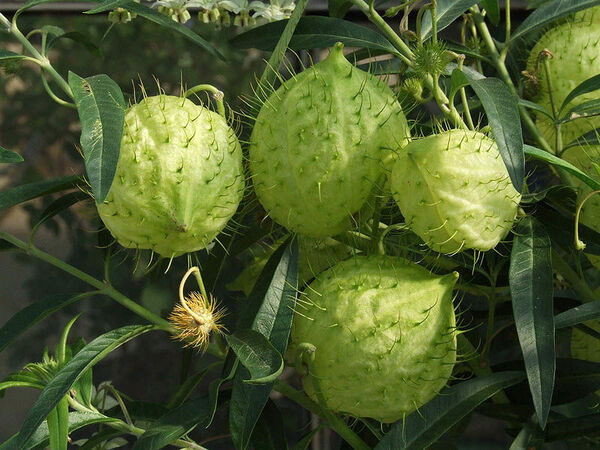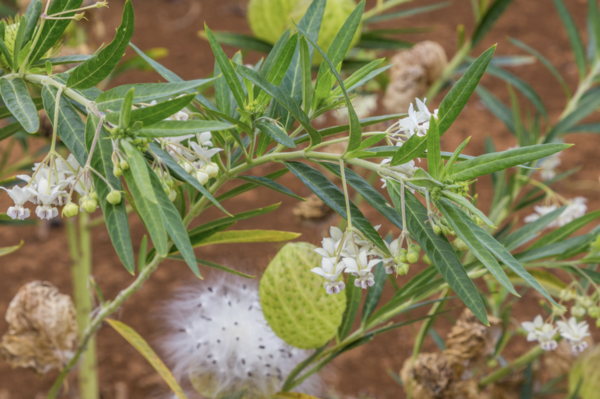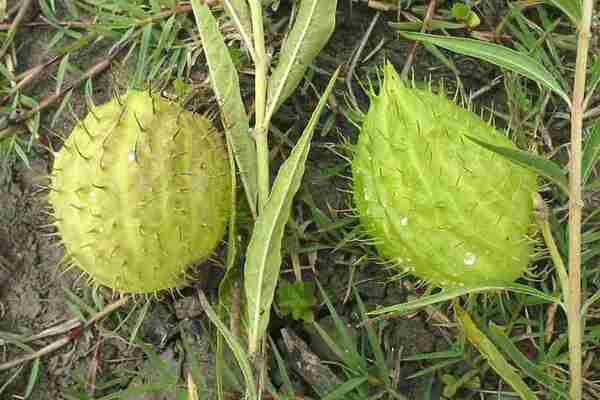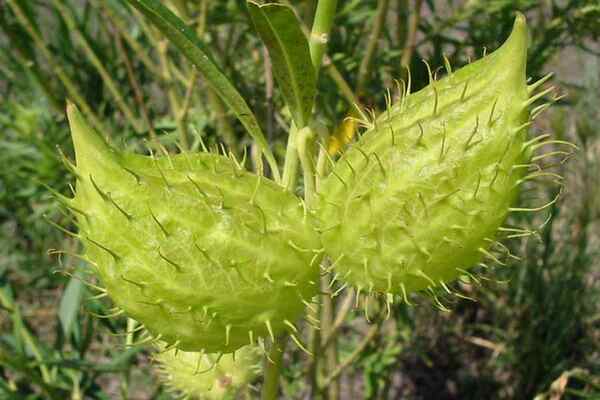Have you ever seen a plant that looks like it has tiny, spiky balloons hanging off it? Well, that’s Gomphocarpus physocarpus, commonly known as the Balloon Plant or Tumbling-Tumbleweed. This quirky plant isn’t just eye-catching because of its balloon-like fruit—it also has a fascinating background in terms of classification, toxicity, and its native habitat. Let’s dive into the details!

Kingdom: Plantae
Phylum: Angiosperms
Class: Eudicots
Order: Gentianales
Family: Apocynaceae (Dogbane family)
Genus: Gomphocarpus
Species: Gomphocarpus physocarpus
This plant belongs to the Apocynaceae family, which is known for having both ornamental and medicinal plants. It’s a part of the Gomphocarpus genus, which also includes Gomphocarpus fruticosus (another similar species we'll talk about in a bit).
Now, a word of caution: Balloon Plant is toxic. It contains compounds known as cardenolides (also called cardiac glycosides), which can be harmful if ingested. These compounds affect the heart and are toxic to humans, pets, and livestock if consumed. So, while it may look cute with its spiky "balloons," make sure to handle it carefully, especially if you have pets or small children around. However, the plant’s toxicity does have an upside—it helps protect the plant from herbivores that might otherwise want to nibble on it!
The Balloon Plant is native to southern Africa, particularly found in countries like South Africa, Namibia, and Botswana. It thrives in dry, arid environments, often growing in rocky areas or on open slopes. This plant has adapted to harsh conditions, making it relatively drought-tolerant once established.

Because of its unique appearance, Gomphocarpus physocarpus has also been introduced to other parts of the world as an ornamental plant. It’s grown in various regions for its striking fruit, though it’s typically kept in controlled environments due to its toxicity.
Besides Balloon Plant, Gomphocarpus physocarpus goes by a few other names. In some places, it’s known as Tumbling-Tumbleweed, a nod to its fruit’s ability to tumble around when they fall off the plant, which can help the seeds spread. In South Africa, where it’s native, it’s sometimes referred to as "Gomphocarpus" or simply "physocarpus".
What really sets Gomphocarpus physocarpus apart from other plants is its fruit. The fruit, which looks like a little balloon or a puffed-up globe, starts green and turns a golden-brown color when it matures. Each "balloon" is covered in soft, spiky protuberances. These fruit “balloons” contain seeds, which are distributed by the wind. When the fruit matures, it bursts open and scatters seeds over a wide area, which is a clever way of ensuring the plant’s reproduction and spread.

If you’re familiar with Gomphocarpus species, you may have also heard of Gomphocarpus fruticosus, also known as the Needle-Headed Milkweed. While they share some similarities, they are distinct species with several key differences. Here's a quick comparison between the two:
| Feature | Gomphocarpus physocarpus (Balloon Plant) | Gomphocarpus fruticosus (Needle-Headed Milkweed) |
|---|---|---|
| Common Names | Balloon Plant, Tumbling-Tumbleweed | Needle-Headed Milkweed, Fruticosus |
| Fruit Shape | Balloon-shaped, spiky, and round | Needle-like, elongated, and more smooth |
| Fruit Size | Larger, about 4-6 cm in diameter | Smaller, about 3-5 cm in length |
| Toxicity | Yes, contains cardenolides | Yes, also contains cardenolides |
| Habitat | Dry, rocky areas in southern Africa | Similar, often in drier regions |
| Flower Color | White, with pink or purple tones | Similar, but with more white and pale tones |
| Leaf Shape | Elliptical to lanceolate, smooth texture | Oval to lanceolate, sometimes with slight teeth |
| Native Area | Southern Africa | Southern Africa |
| Cultural Use | Ornamental plant | Ornamental and medicinal uses |

Gomphocarpus physocarpus, or the Balloon Plant, is a striking example of nature’s creativity. From its eye-catching fruit to its fascinating ecological role in dry habitats, this plant offers much more than just a visual spectacle. However, its toxicity means that it should be appreciated from a distance, especially if you have curious pets or children around.
If you're ever lucky enough to see one of these balloon-like beauties in person, take a moment to admire its quirky charm and its ability to survive in harsh conditions. Whether in nature or as a garden ornamental, Balloon Plant is a testament to the resilience of life in the face of adversity.
animal tags: Gomphocarpus-physocarpus
We created this article in conjunction with AI technology, then made sure it was fact-checked and edited by a Animals Top editor.